Introduction: The Role of Pressure Vessel Tanks in Chemical Processing
In the chemical processing industry, pressure vessel tanks are among the most crucial pieces of equipment used to store, process, and transport various chemicals and materials. These tanks are specially designed to withstand high pressures, temperature fluctuations, and corrosive substances, making them essential to the safe and efficient operation of chemical plants. The role of pressure vessel tanks goes far beyond mere storage; they are integral to ensuring that chemical reactions, separations, and other processes are conducted under controlled and safe conditions.
1. The Importance of Pressure Vessel Tanks in Chemical Processes
Pressure vessel tanks are used in a wide range of chemical processes, including the production of petrochemicals, pharmaceuticals, food and beverages, and specialty chemicals. These vessels provide a contained environment where chemicals can react or be processed under controlled conditions of pressure, temperature, and volume. Some of the key functions of pressure vessels in chemical processing include:
Reacting Chemicals Under Pressure: Many chemical reactions require the reactants to be exposed to high pressure to facilitate faster reactions or achieve specific reaction outcomes. In such cases, pressure vessels are used to contain and manage the necessary conditions.
Storage of Pressurized Liquids and Gases: Pressure vessels are used to store gases or liquids that need to be kept at high pressure for either safety or efficiency reasons. Examples include storing liquefied gases like propane, oxygen, or carbon dioxide.
Transportation of Hazardous Materials: Pressure vessels are used to transport highly volatile or toxic substances under controlled conditions. This could include the transportation of chemicals that are sensitive to temperature or pressure, and improper handling could lead to dangerous situations.
Separation and Distillation: In distillation or separation processes, pressure vessels are used to manage the pressure required to separate different components of a mixture based on their volatility.
2. Design Considerations for Pressure Vessel Tanks
The design of a pressure vessel tank is critical to its safe operation, as it must withstand extreme conditions and ensure the safety of workers, the environment, and the facility. Several factors must be considered during the design and construction of pressure vessels:
Material Selection: Pressure vessels must be constructed from materials capable of withstanding high pressures, extreme temperatures, and corrosive chemicals. Common materials used include carbon steel, stainless steel, and other alloys that are resistant to corrosion, cracking, and other forms of material degradation.
Structural Integrity: The vessel must be designed to handle internal pressures without risk of rupture. The strength of the material, the thickness of the walls, and the type of joints used are all important factors in ensuring the structural integrity of the vessel. Welds, in particular, must be carefully designed and tested to prevent failure.
Stress Analysis: The internal and external stresses on a pressure vessel during operation must be carefully evaluated. This includes stress from internal pressure, thermal stresses from temperature changes, and external loads such as wind or seismic forces. Finite element analysis (FEA) is commonly used to predict potential weak points and optimize design.
Safety Features: Given the high-risk nature of chemical processing, pressure vessels must be equipped with various safety features. This includes pressure relief valves, burst disks, and emergency venting systems to prevent catastrophic failures. These safety devices are designed to release pressure safely if the internal pressure exceeds the allowable limit.
3. Adherence to Safety Standards
The design, construction, and operation of pressure vessels are regulated by strict safety standards to minimize risks to human life and the environment. International standards and codes, such as the ASME Boiler and Pressure Vessel Code (BPVC), API 650, and ISO 11120, provide guidelines for the design, construction, testing, and inspection of pressure vessels.
ASME BPVC: The American Society of Mechanical Engineers (ASME) sets the benchmark for the design and fabrication of pressure vessels. The BPVC outlines requirements for materials, design calculations, welding, and testing to ensure that pressure vessels can operate safely under the intended conditions.
API 650: The American Petroleum Institute (API) provides standards specifically for the design and construction of welded tanks for oil storage. These tanks are often subjected to high pressures and can store hazardous materials, so their design must meet rigorous safety standards.
ISO 11120: This international standard governs the design and testing of pressure vessels used to store gas at high pressures. It ensures that vessels are designed to be safe, efficient, and durable for use in various industries, including chemicals and energy.
Periodic inspection and maintenance are also mandated by these safety standards to ensure that pressure vessels continue to function properly throughout their lifespan. Non-destructive testing (NDT) methods, such as ultrasonic testing and X-ray inspection, are commonly used to detect any internal defects that might jeopardize the vessel’s integrity.
4. Operational Efficiency and Process Optimization
A well-designed pressure vessel does not only contribute to safety but also enhances the efficiency of chemical processes. Properly engineered pressure vessels help optimize the conditions under which chemical reactions take place, ensuring higher yields, reduced energy consumption, and minimal waste.
Optimizing Reaction Conditions: By controlling the pressure, temperature, and volume inside the vessel, manufacturers can optimize chemical reactions for maximum efficiency. For example, maintaining the correct pressure is essential for reactions that require gas-phase reactants, such as polymerization or hydrogenation processes.
Energy Efficiency: Maintaining the right internal conditions allows chemical plants to reduce energy costs. For instance, when reactions occur at high pressure, the temperature required to achieve the same reaction rate is often lower, thus reducing energy consumption.
Minimizing Material Loss: Pressure vessels are designed to minimize leaks, spills, or waste during chemical reactions. A properly designed and sealed pressure vessel ensures that valuable chemicals are not lost due to leakage or uncontrolled emissions.
5. The Role of Technology and Innovation
With advances in materials science, engineering, and computational modeling, the design of pressure vessels has continued to evolve. For instance, the use of advanced alloys and composite materials has enabled the development of pressure vessels that are lighter, more durable, and resistant to extreme temperatures and aggressive chemicals.
Smart pressure vessels are becoming increasingly common. These vessels are equipped with sensors that can monitor temperature, pressure, and corrosion levels in real-time. The data collected can be used for predictive maintenance, allowing plant operators to anticipate issues before they become critical and thus avoid costly downtime or accidents.
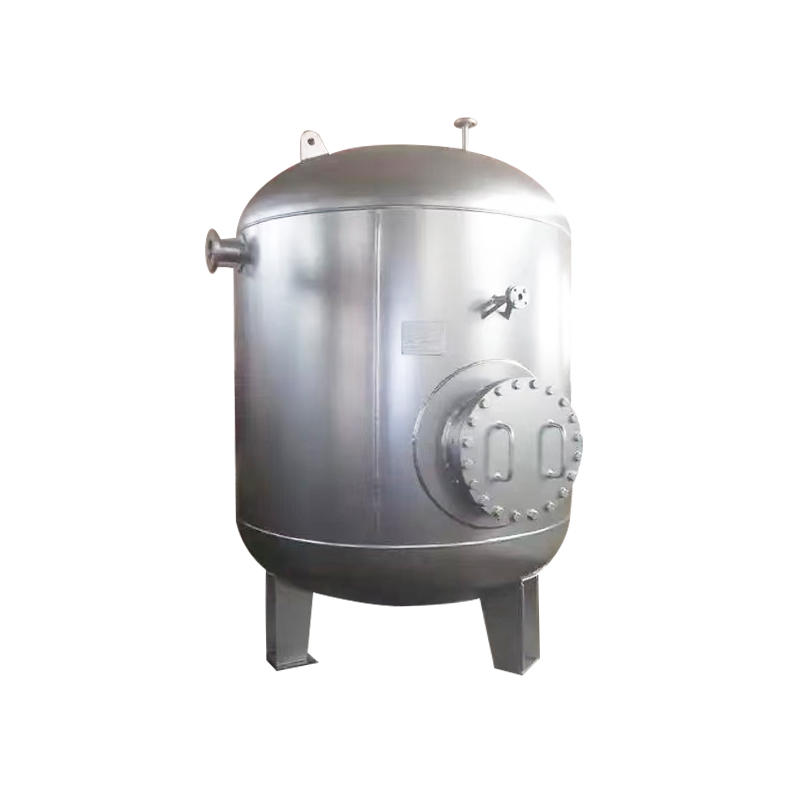
Why Pressure Vessel Design is Crucial for Safety
Pressure vessel design is fundamental to ensuring safety and operational efficiency in industries that handle pressurized fluids or gases. These vessels are used in a variety of applications, from chemical processing plants and refineries to power plants and oil rigs. Given the high-risk nature of these systems, proper design is essential to avoid catastrophic failures such as explosions, leaks, or structural failures, which can result in significant damage, environmental hazards, and even loss of life.
1. Material Selection for Pressure Vessel Design
The material used in a pressure vessel plays a critical role in its overall performance and longevity. This selection process is not just about choosing a material that is strong but also about ensuring it can withstand the harsh environmental conditions the vessel will face. Here are the primary considerations:
Corrosion Resistance:
Pressure vessels often come into contact with aggressive chemicals, high temperatures, or fluctuating pressures. These conditions can lead to corrosion, which weakens the structure and can result in failure. For example, acidic substances or high-chloride environments can cause pitting or stress corrosion cracking. Choosing corrosion-resistant materials, such as stainless steel or alloy steels, helps protect the vessel’s integrity. Stainless steels, especially austenitic grades (like 304 or 316), are common for their ability to resist corrosion in aggressive environments, whereas high-performance alloys are used for more specialized environments.
Strength and Durability:
The material must be strong enough to withstand the internal pressures exerted by the contents and external factors such as seismic or wind loads. Steel alloys, particularly carbon steel and low-alloy steel, are often used for pressure vessels as they offer a good balance between strength and cost. The material should also be tough enough to handle thermal stresses, impact, and cyclic loading without failing. This is why materials must also be tested for their ability to endure fatigue under repeated pressure cycles.
Temperature Resistance:
Pressure vessels often operate at extreme temperatures. Some are designed to handle very high temperatures (e.g., in power plants or chemical reactors), while others may need to withstand cryogenic conditions (e.g., in LNG tanks). Materials such as chromium-molybdenum alloy steels are commonly chosen for their resistance to high-temperature creep and oxidation, while materials with low thermal conductivity might be required for cryogenic applications.
2. Pressure and Temperature Considerations
Pressure vessels are subject to both internal and external pressure variations, and temperature fluctuations can exacerbate these stresses. The design must take into account these varying conditions to ensure safety and long-term reliability.
Designing for High and Low Pressures:
A pressure vessel must be designed to handle both high and low pressures safely. At high pressures, the vessel must withstand the forces without deforming or rupturing, while at low pressures, the vessel should remain structurally stable and airtight. The design process includes calculating the maximum expected internal pressure and ensuring that the vessel can endure this pressure without failing. Extreme fluctuations in pressure can occur (for instance, in gas storage tanks), so the material and structural design should accommodate these variations, including dynamic loads and pressure shocks.
Thermal Expansion:
Pressure vessels often contain hot fluids or gases, which can expand and contract with temperature changes. This expansion can cause the tank walls to stretch or contract, leading to structural stresses. If not properly designed, these thermal changes can induce cracking, warping, or buckling. A properly designed vessel accounts for the material's coefficient of thermal expansion, ensuring that the vessel can accommodate these changes without compromising structural integrity.
3. Stress and Fatigue Analysis
The structural integrity of a pressure vessel relies on its ability to resist the stresses imposed by internal pressure, temperature changes, and external factors. Stress and fatigue analysis is critical in ensuring that the vessel can handle these forces over time without failure.
Stress Distribution:
When a pressure vessel is subjected to internal pressure, stresses are generated across its walls. A well-designed vessel will distribute these stresses as evenly as possible to avoid creating "hot spots" where cracks or other forms of failure could initiate. By using advanced computational methods such as Finite Element Analysis (FEA), engineers can simulate how pressure, temperature, and external forces will affect the vessel and adjust its design to optimize stress distribution.
Fatigue Resistance:
Repeated cycles of pressurization and depressurization (such as in vessels used for storage or transportation of gases) can cause fatigue failure. The vessel must be designed to withstand numerous pressure cycles without experiencing significant degradation or crack propagation. Fatigue analysis takes into account the material properties, including its endurance limit and the effects of temperature cycling, to ensure that the vessel can endure these stresses over its operational life.
4. Safety Features and Compliance
Safety is paramount when designing pressure vessels, and several features are incorporated to prevent overpressure, leaks, and catastrophic failures. These safety mechanisms must also meet specific regulatory standards to ensure legal compliance and operational safety.
Relief Valves:
A relief valve is a crucial safety component in any pressure vessel. It is designed to release pressure when it exceeds a predefined safe limit, preventing the vessel from rupturing or exploding. Relief valves must be correctly sized and maintained to ensure they function as intended during pressure surges. The valve must also be strategically located to ensure the rapid release of pressure in the event of an overpressure scenario.
Safety and Pressure Testing:
Before a pressure vessel can be put into service, it undergoes extensive safety and pressure testing, including hydrostatic testing, where the vessel is filled with water and pressurized to ensure it can withstand its rated pressure. Non-destructive testing (NDT) methods, such as ultrasonic testing or radiography, are used to detect internal flaws or structural weaknesses before the vessel is commissioned.
Standards Compliance:
Pressure vessel design must adhere to a variety of national and international standards. In the United States, the American Society of Mechanical Engineers (ASME) Boiler and Pressure Vessel Code (BPVC) provides comprehensive guidelines for designing, constructing, and inspecting pressure vessels. These standards cover everything from material selection and fabrication methods to safety and testing procedures. The Pressure Equipment Directive (PED) is a similar set of regulations within the European Union. Adhering to these standards ensures that pressure vessels are not only safe but also legally compliant, reducing the risk of accidents and potential legal liabilities.
Why Pressure Vessel Design is Key to Efficiency
Pressure vessels are critical components in various industrial applications, particularly in chemical, oil, gas, power, and food industries. Their design is essential not only for ensuring safety but also for optimizing operational efficiency. A well-designed pressure vessel can significantly enhance the overall performance of a system by maximizing capacity, minimizing energy consumption, improving process control, and easing maintenance tasks.
Optimizing Capacity and Space
One of the most important aspects of pressure vessel design is the maximization of usable space. In industries like chemical storage, where large quantities of volatile materials are stored or processed, space optimization is key to minimizing material wastage and improving efficiency.
Proper Sizing of the Vessel
The first step in optimizing capacity is ensuring that the pressure vessel is sized correctly for the intended application. Over-sized vessels result in unnecessary material and cost expenditure, while under-sized vessels may lead to frequent overflows or operational shutdowns due to insufficient storage capacity. By using accurate calculations based on the material’s properties, flow rate, and operating pressure, a designer can precisely determine the size required. For example, a well-designed tank will meet peak operational demands without excessive unused space, leading to more effective and cost-efficient use of the vessel.
For chemical storage, where the contents are often hazardous or highly reactive, the importance of sizing becomes even more critical. A vessel that is too large for the required capacity could lead to inefficient use of resources, increasing operational costs, and potentially creating safety concerns if it is not properly managed. On the other hand, an under-sized vessel may lead to frequent shutdowns and operational inefficiencies, as operators scramble to maintain system balance.
Space Utilization in Multi-Stage Operations
Pressure vessels in multi-stage processes, such as in distillation or chemical synthesis, require careful internal design to maximize storage capacity. Designers use baffles, partitions, or trays to optimize the internal space and improve the contact between substances. This design prevents stagnation areas and ensures that the pressure vessel makes the most of its capacity for different stages of a reaction or process.
By incorporating multiple stages inside a single vessel, designers reduce the need for additional tanks, reducing both space and resource usage. This optimization also minimizes the number of pumps and transfer systems needed, further decreasing energy consumption and reducing the overall footprint of the plant.
Minimizing Energy Consumption
In industrial processes that involve heat exchange, pressure, or fluid flow, a significant portion of energy is consumed during heating, cooling, and pressurization. Pressure vessel design plays a crucial role in minimizing energy consumption by enhancing thermal efficiency and optimizing pressure settings.
Thermal Efficiency and Heat Transfer
In processes such as distillation, chemical reaction, or steam generation, efficient heat transfer is critical to reducing energy consumption. Pressure vessels designed for heat exchange, such as heat exchangers or reactors, should allow for optimal heat transfer between the fluid inside the vessel and its surroundings.
For example, a pressure vessel used in a distillation column or reaction vessel can be designed with a series of internal tubes or coils that increase the surface area available for heat exchange. The more efficient the heat transfer, the less external energy is required to maintain the desired temperature.
Modern pressure vessels incorporate design features such as:
Insulation: Reducing heat loss or gain by insulating the vessel reduces the energy needed to maintain or control temperature.
Enhanced Surface Area: Internal structures like heat exchangers, spiral coils, or finned surfaces increase the contact area for heat transfer, improving thermal efficiency.
Optimized Flow Paths: Internal designs that promote uniform flow distribution inside the vessel, such as baffles or trays, prevent areas of stagnant fluid that can reduce heat transfer efficiency.
A well-designed heat exchanger, for example, can increase the thermal efficiency of a process by 10-20%, significantly reducing energy costs and improving overall process efficiency.
Pressure Optimization
Pressure optimization is another critical factor in energy consumption. Pressure vessels are designed to operate at a specific pressure range to ensure the efficiency of a process while minimizing energy loss. Operating the vessel outside this pressure range could lead to excessive energy use or suboptimal process performance.
The design of pressure vessels often includes safety margins and pressure relief mechanisms to handle fluctuations and prevent over-pressurization, which can lead to energy waste. For example, in a gas storage tank, excessive pressure can lead to higher compression energy costs, while low pressure can result in inefficient gas flow or processing.
By maintaining optimal pressure levels through advanced monitoring and control systems, energy consumption can be minimized without compromising the safety or performance of the system. Incorporating pressure relief valves, automatic pressure regulators, and smart sensors ensures that the pressure remains within the ideal operating range, further reducing energy costs.
Enhanced Process Control
Another key factor in the efficiency of pressure vessels is process control. The internal design of a pressure vessel can have a significant impact on how materials flow, mix, and react, which directly affects the outcome of industrial processes like chemical reactions, separations, or heat exchanges.
Flow Distribution and Internal Design
Efficient process control is often reliant on the design of the internal components, such as baffles, trays, or mixing agitators. For chemical reactions that require a specific level of turbulence or mixing, the design of the internal structure ensures that the materials are evenly distributed throughout the vessel. This can optimize the reaction rates or separation processes within the vessel.
For example, a distillation column benefits from a well-designed series of trays or packing materials that increase surface area and promote better separation of components. This internal design enables a more efficient use of space, reduces the need for additional separation stages, and speeds up the overall process.
The use of baffles can help prevent undesirable flow patterns, such as vortex formation, that could lead to uneven heat or material distribution. This ensures that the process remains stable, efficient, and capable of delivering the desired product quality.
Advanced Control Systems
Modern pressure vessel designs incorporate sophisticated automatic control systems, including sensors, actuators, and feedback loops, to monitor and adjust the internal environment of the vessel in real-time. These systems ensure that pressure, temperature, and flow rates are always maintained at optimal levels.
By continuously adjusting these parameters based on real-time data, the vessel can operate at peak efficiency, minimizing the chances of human error and reducing the need for manual intervention. For example, temperature sensors inside a reaction vessel can continuously monitor the heat level, and automatic heaters or coolers can adjust to maintain the ideal temperature, improving the consistency and efficiency of the process.
Ease of Maintenance
Maintenance is another crucial aspect of pressure vessel design. Pressure vessels must be designed for ease of access, routine inspections, and quick repairs to minimize downtime during maintenance activities. In industries where downtime is costly, a well-designed pressure vessel can lead to significant operational savings.
Design for Accessibility
A well-designed pressure vessel is easy to inspect and maintain. This can be achieved through features such as:
Access Ports: Strategic placement of manways, inspection hatches, and service ports allows for easy access to the interior of the vessel without requiring disassembly.
Modular Components: Some pressure vessels are designed with modular parts that can be easily replaced or repaired without dismantling the entire system.
Corrosion-Resistant Materials: Using materials that are resistant to corrosion or wear can extend the lifespan of the pressure vessel and reduce the frequency of repairs.
Automatic Controls and Sensors
Modern pressure vessels often incorporate sensors for monitoring pressure, temperature, and structural integrity. These sensors can trigger alarms or shut down operations if conditions fall outside acceptable limits, allowing for early detection of potential issues before they lead to system failure.
Automatic control systems can also help reduce human error by providing real-time data to operators, who can then make informed decisions without the need for constant manual intervention. This not only reduces the risk of operational failures but also enhances the efficiency of routine maintenance by automating some of the diagnostic tasks.
| Feature | Description | Benefit |
| Access Ports | Includes manways, inspection hatches, and service ports strategically placed. | Allows for easy access to the interior for inspection, cleaning, and maintenance without needing to disassemble the vessel. |
| Modular Components | Components designed for easy replacement without dismantling the entire system. | Enables quicker repairs and replacements, reducing downtime and operational interruptions. |
| Corrosion-Resistant Materials | Materials selected for their resistance to corrosion, wear, and chemical degradation. | Extends the lifespan of the vessel and reduces the need for frequent repairs or replacements. |
| Sensors for Monitoring | Includes sensors for pressure, temperature, and structural integrity monitoring. | Provides real-time data and early warnings for maintenance, helping prevent costly failures. |
| Automatic Control Systems | Automated systems for controlling operations and diagnosing issues. | Reduces human error and enhances maintenance efficiency by providing operators with accurate, real-time data for decision-making. |
Case Studies in Chemical Processing
Pressure vessels are integral components in a wide range of industrial processes, where their ability to safely contain substances under high pressure is paramount. Two key industries that heavily rely on pressure vessels are oil refining and pharmaceutical manufacturing. These sectors have vastly different operational needs, but both require specialized pressure vessel designs to ensure safety, efficiency, and product quality.
1. Oil Refining: The Role of Pressure Vessels in Distillation, Cracking, and Separation
Oil refining is a highly complex and energy-intensive process where crude oil is transformed into usable products such as gasoline, diesel, kerosene, and petrochemicals. Pressure vessels play a critical role in the various stages of this refining process, including distillation, cracking, and separation. Given the volatile nature of crude oil and its derivatives, pressure vessels must be designed to withstand high pressures and temperatures while maintaining safe, efficient operations.
Distillation Process
Distillation is one of the primary processes in oil refining, where the various components of crude oil are separated based on their boiling points. The crude oil is heated in a furnace and then fed into a distillation column, where the different fractions of the oil are separated. The use of pressure vessels in this context is crucial because the separation process often involves the application of pressure to prevent the formation of undesired compounds and to maintain the appropriate temperature levels.
In distillation, pressure vessels are used to store the crude oil, vaporized fractions, and condensed liquids. The design of the distillation column, including the pressure vessel component, must ensure that the liquid and vapor phases are kept under stable conditions to facilitate the efficient separation of components. The vessel walls must be able to withstand the high internal pressures, which can vary depending on the boiling points of the components being separated.
To ensure efficiency and safety, the pressure vessel must be made of materials that can resist corrosion from the various compounds in crude oil, such as sulfur, hydrogen sulfide, and heavy metals. The vessel must be able to accommodate the fluctuating pressures that occur as different fractions are distilled at different temperatures.
Cracking Process
Cracking is another key process in oil refining, where larger hydrocarbons (such as those found in heavy oils or residuals) are broken down into smaller, more valuable hydrocarbons such as gasoline and diesel. This is achieved through either thermal cracking or catalytic cracking, both of which require high-pressure and high-temperature conditions. The cracking process is typically carried out in a reactor vessel, which is a type of pressure vessel designed to facilitate the chemical reactions necessary for cracking.
The design of pressure vessels used in cracking must take into account the extremely high temperatures (often exceeding 800°C) and pressures (ranging from 20 to 70 bar) that are present during the reaction. These vessels must be able to handle the rapid and sometimes violent reactions that take place within, while ensuring that the material inside does not degrade or corrode. For example, thermal cracking typically involves the use of steam, which can introduce additional challenges in terms of material selection to prevent corrosion or erosion.
For catalytic cracking, the pressure vessel must be designed to ensure proper contact between the feedstock and the catalyst, maintaining optimal temperature and pressure conditions to maximize the yield of desirable products while minimizing unwanted by-products.
Separation and Storage
Following the distillation and cracking processes, the various hydrocarbon products are further separated and stored in pressure vessels. These vessels are used to store the different fractions of crude oil, intermediate products, and final products such as gasoline, diesel, and kerosene. For these applications, pressure vessels must be designed to handle the specific physical and chemical properties of each product, as well as to ensure that the products remain stable and uncontaminated during storage.
In this phase, pressure vessels are often used to separate light hydrocarbons (such as methane and ethane) from heavier components. This is typically done through a process known as gas separation, which requires the application of pressure to maintain the gas in a liquid state or to facilitate its separation from other liquid phases. Proper pressure regulation is critical during storage to avoid over-pressurization, which could lead to leaks or even catastrophic failures.
2. Pharmaceutical Manufacturing: Pressure Vessels in Reactors and Sterilization Tanks
In pharmaceutical manufacturing, pressure vessels are used in several critical applications, including reactors and sterilization tanks. The requirements for pressure vessels in this industry are unique because they must not only handle high pressure and temperature but also ensure that the products being produced are not contaminated in any way. The vessel design must maintain precise control over the temperature, pressure, and other environmental factors to ensure the success of chemical reactions and the quality of the final product.
Reactors for Chemical Reactions
Pharmaceutical manufacturing often involves complex chemical reactions, such as the synthesis of active pharmaceutical ingredients (APIs), which require careful control of temperature, pressure, and reactant concentrations. Pressure vessels are commonly used as reactors in these processes, as they can provide the controlled environment necessary for reactions to occur efficiently and safely.
For instance, during the synthesis of certain antibiotics, high pressure is required to enhance the solubility of reactants and to increase the rate of reaction. The design of pharmaceutical reactors involves considerations like material compatibility with reactive chemicals, the ability to withstand high pressures (typically in the range of 10–50 bar), and the need for temperature regulation. Many pharmaceutical reactions are highly sensitive to temperature fluctuations, so the pressure vessels must be designed to allow precise control over both pressure and temperature.
A key feature of pharmaceutical reactors is their ability to be sterilized, as contamination of the final product can lead to serious health risks. This is where the material selection and the design of the vessel become crucial. The vessels must be made of non-corrosive, non-reactive materials such as stainless steel, which can withstand both high temperatures and aggressive cleaning procedures.
In many pharmaceutical reactions, the presence of oxygen or other reactive gases must be carefully controlled. For example, if a reaction is oxygen-sensitive, the vessel may need to be designed to operate in an inert atmosphere, which can add complexity to the vessel design and operation.
Sterilization Tanks
Sterilization is another critical process in pharmaceutical manufacturing, where pressure vessels are used to sterilize both raw materials and finished products. Sterilization is typically carried out using steam, which is pressurized to ensure that it can penetrate all parts of the product and kill any microorganisms present. This process is most commonly carried out in autoclaves, which are large pressure vessels specifically designed for sterilization.
Autoclaves must be designed to withstand both high pressure and temperature, typically reaching pressures of around 2–3 bar and temperatures of 121°C or higher. The design must also ensure that the sterilization process is uniform throughout the vessel, meaning that every part of the product is exposed to the necessary conditions for sterilization.
The design of sterilization pressure vessels must also account for the potential for material degradation over time. Repeated exposure to high-temperature steam can cause the materials of the pressure vessel to weaken or corrode. Therefore, the materials used for construction must be resistant to these conditions, and regular maintenance must be scheduled to ensure the integrity of the vessel.
Sterilization vessels in the pharmaceutical industry often have stringent cleanliness and safety requirements. For example, sterilization cycles must be thoroughly monitored to ensure that the correct pressure and temperature are maintained for the entire duration of the process. In some cases, additional monitoring systems are integrated into the pressure vessels to detect deviations from the required conditions, thereby ensuring the safety and efficacy of the sterilization process.
3. Challenges in Pressure Vessel Design and Operation
Both oil refining and pharmaceutical manufacturing present unique challenges in pressure vessel design and operation. In the case of oil refining, the challenge lies in managing the high-pressure conditions while ensuring that the vessel material can withstand the corrosive and erosive effects of the feedstocks and products. In pharmaceutical manufacturing, the main concern is contamination control, ensuring that the pressure vessels are not only efficient at withstanding pressure and temperature but also meet the stringent cleanliness standards required for pharmaceutical products.
Key factors in the successful design of pressure vessels for both industries include:
Material Selection: The material used in the construction of the pressure vessel must be compatible with the substances being processed. In oil refining, materials must resist corrosion from sulfur, hydrogen sulfide, and high-temperature steam. In pharmaceutical manufacturing, materials must be resistant to the cleaning agents used and ensure that there is no contamination.
Temperature and Pressure Control: Both industries require vessels that can handle extreme temperatures and pressures, often under varying conditions. Ensuring precise control over these variables is essential for the success of the process.
Safety Considerations: Given the high pressures involved, pressure vessels must be designed with safety features, such as relief valves, to prevent catastrophic failures in the event of pressure spikes.


 English
English русский
русский عربى
عربى

.jpg)
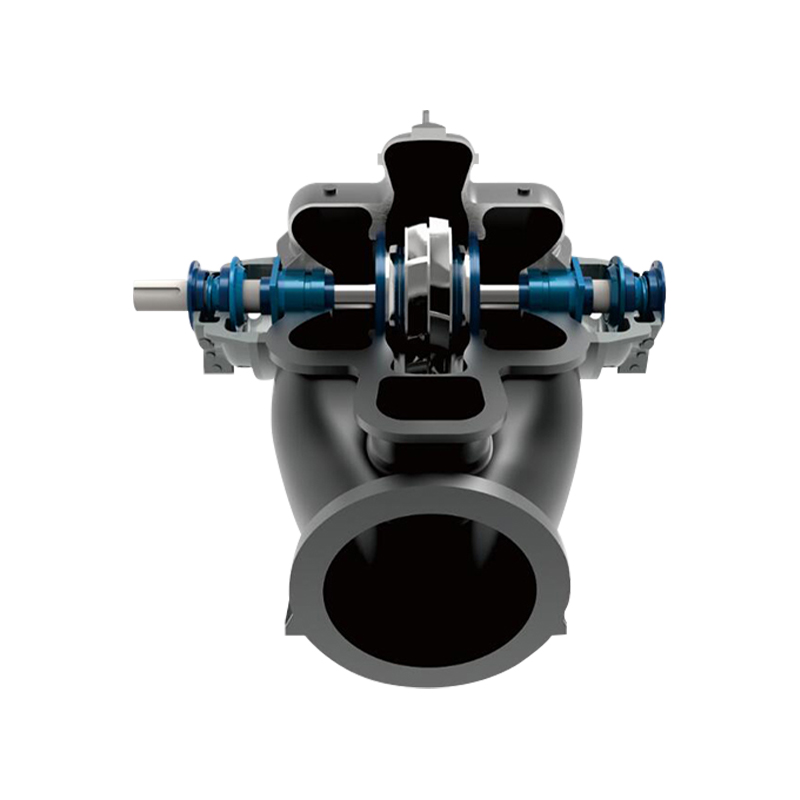
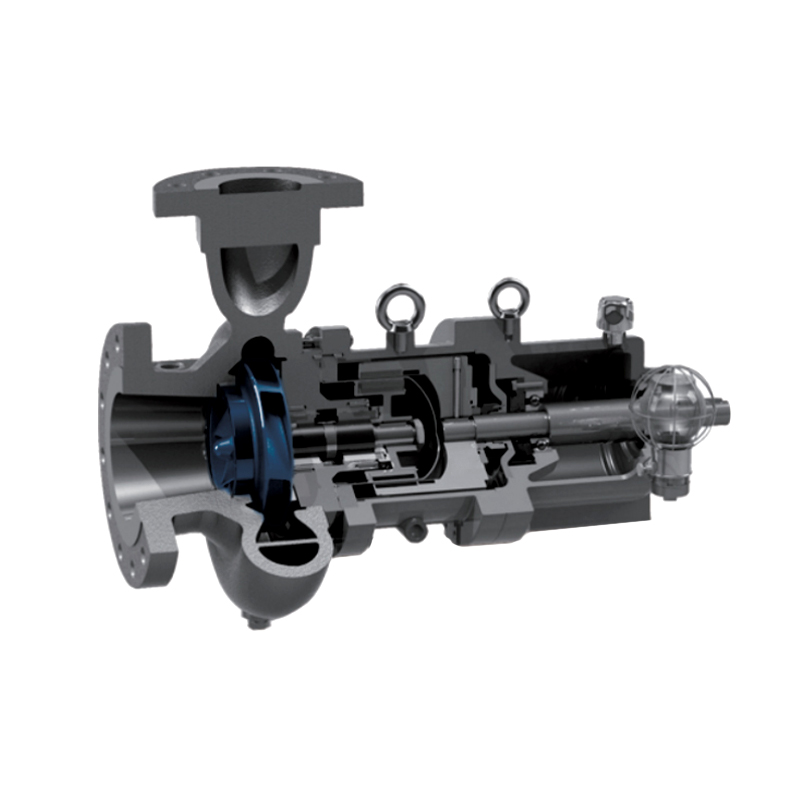

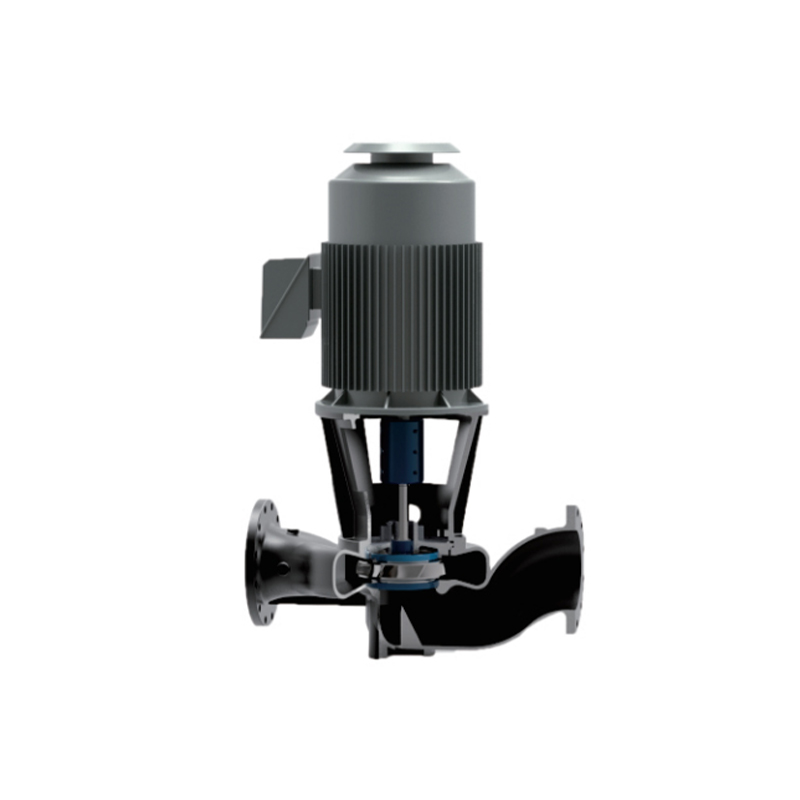

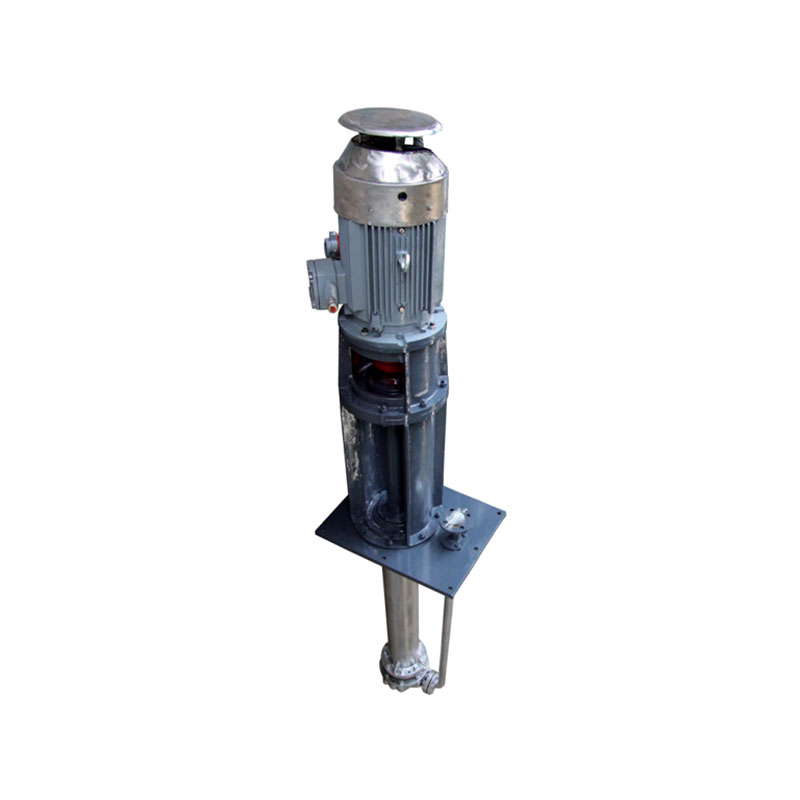
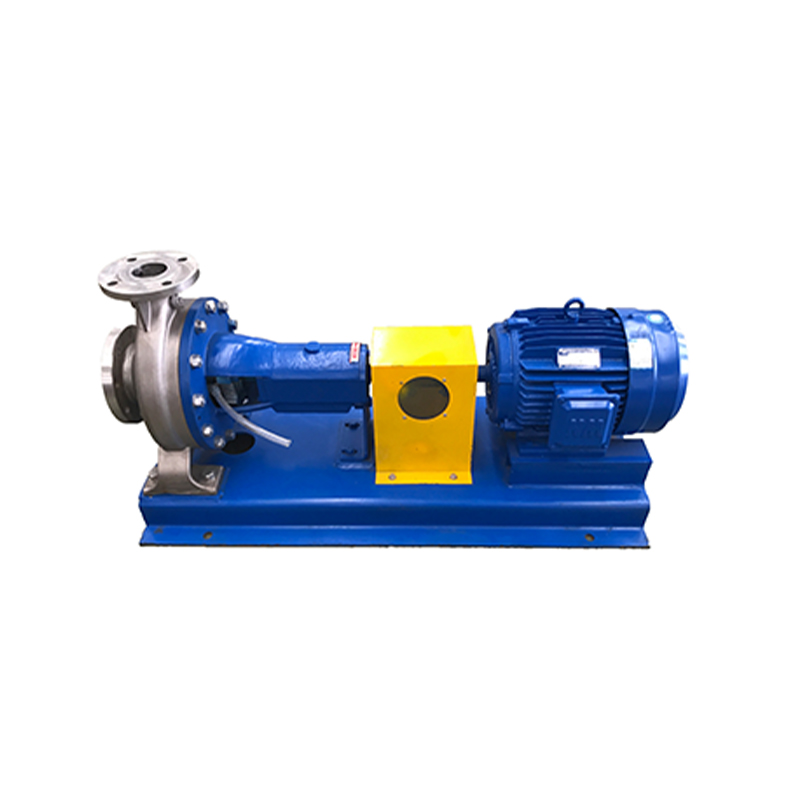

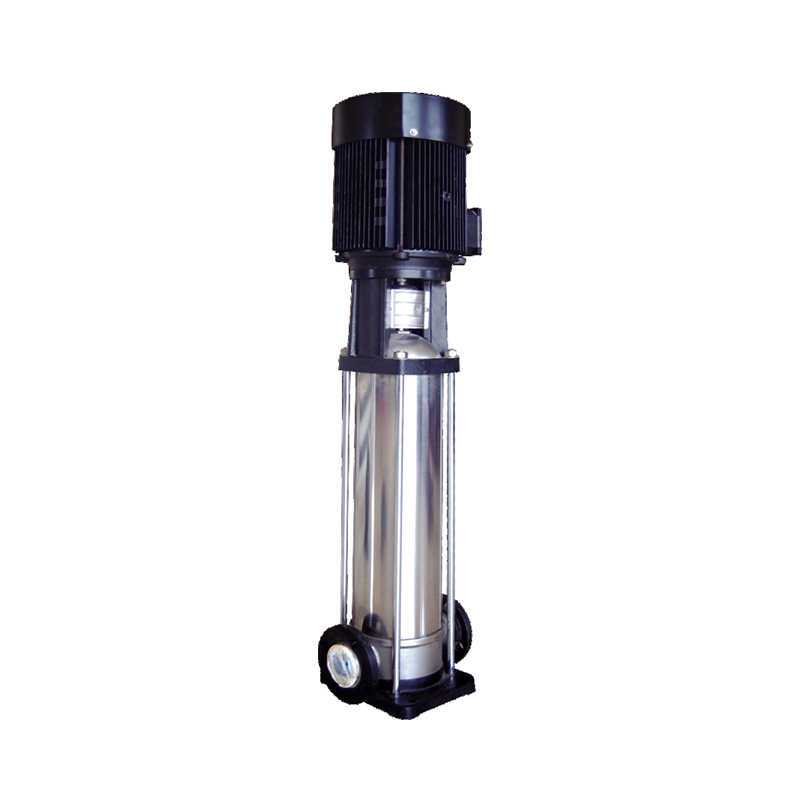






 ENG
ENG

 TOP
TOP